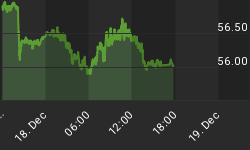12/7/2010 8:49:50 AM
The markets take a breather as the dollar and bonds reverse course...
Recommendation:
Take no action.
Daily Trend Indications:

- Positions indicated as Green are Long positions and those indicated as Red are short positions.
- The State of the Market is used to determine how you should trade. A trending market can ignore support and resistance levels and maintain its direction longer than most traders think it will.
- The BIAS is used to determine how aggressive or defensive you should be with a position. If the BIAS is Bullish but the market is in a Trading state, you might enter a short trade to take advantage of a reversal off of resistance. The BIAS tells you to exit that trade on "weaker" signals than you might otherwise trade on as the market is predisposed to move in the direction of BIAS.
- At Risk is generally neutral represented by "-". When it is "Bullish" or "Bearish" it warns of a potential change in the BIAS.
- The Moving Averages are noted as they are important signposts used by the Chartists community in determining the relative health of the markets.
Current ETF positions are:
In cash.
Daily Trading Action
The major index ETFs opened lower and moved in various directions in a tight trading but all of them found an intraday bottom shortly before noon. From that point, the major indexes marched steadily higher remaining in a very tight trading range and then all of them sold off in the final fifteen minutes to leave the major indexes closing modestly lower. The Dow joined the S&P-500 in a modest uptrend state. The Russell-2000 (IWM 76.14 +0.47) continues to lead equity indexes higher, closing at another new high not seen since late 2007. The Semiconductor Index (SOX 411.77 -0.66) posted a fractional loss. The Bank Index (KBE 23.78 -0.11) posted a fractional loss while the Regional Bank Index (KRE 24.18 +0.21) gained nearly one percent. Both bank indexes are approaching the underside of their 200-Day Moving Averages (DMAs) which they haven't closed above since early August. The 20+ Yr Bonds (TLT 96.23 +1.34) gained 1.4% in what appears to be backing and filling before another move lower. NYSE volume was light with just 804M shares traded. NASDAQ volume was also light with 1.606B shares traded.
There were no economic reports of interest released. Instead, the day was all about bargain hunting as the bulls continued to use any opportunity to buy on a dip in stock prices.
The U.S. dollar opened up 0.7% but closed up only 0.3%. This, coupled with a significant rise in longer term bond prices, caused equities to weaken. The main impetus to the rising dollar was a fall in the Euro, based on a discussion of potentially raising the funding for bailouts of European sovereign debt, coupled with a Moody's reduction in the rating of Hungary's sovereign debt. Fed Chairmen Ben Bernanke also spoke over the weekend defending QE2 (Quantitative Easing round 2) and stating he was open to further easing.
Energy (+0.3%) and Tech (+0.1%) moved higher while Consumer Discretionary, Telecom, and Materials were unchanged. That left five of the ten economic sectors in the S&P-500 closing lower ed by Healthcare (-0.7%), Utilities (-0.5%), and Consumer Staples (-0.3%).
Implied volatility for the S&P-500 (VIX 18.02 +0.01) was essentially unchanged and the implied volatility for the NASDAQ-100 (VXN 19.91 +0.14) rose most of one percent.
The yield for the 10-year note fell three basis points to close at 2.94. The price of the near term futures contract for a barrel of crude oil rose nineteen cents to close at $89.38.
Market internals were mixed with advancers leading decliners by two percent on the NYSE and by 4:3 on the NASDAQ. Down volume led up volume by four percent on the NYSE while up volume led down volume by nearly 3:2 on the NASDAQ. The index put/call ratio fell 0.04 to close at 1.11. The equity put/call ratio fell 0.03 to close at 0.49. The level of complacency remains extreme.
Commentary:
Monday's trading again saw light trading volume defined by backing and filling action, which is constructive to the case for a bullish advance. This market looks poised to run higher but has moved too far too fast based on the anticipated liquidity injection by the Federal Reserve. We were looking for a larger pull-back, but you don't always get what you are looking for. We continue to miss the opportunity to get long and are resigned to stay in cash until we have a favorable entry.
We hope you have enjoyed this edition of the McMillan portfolio. You may send comments to mark@stockbarometer.com.















